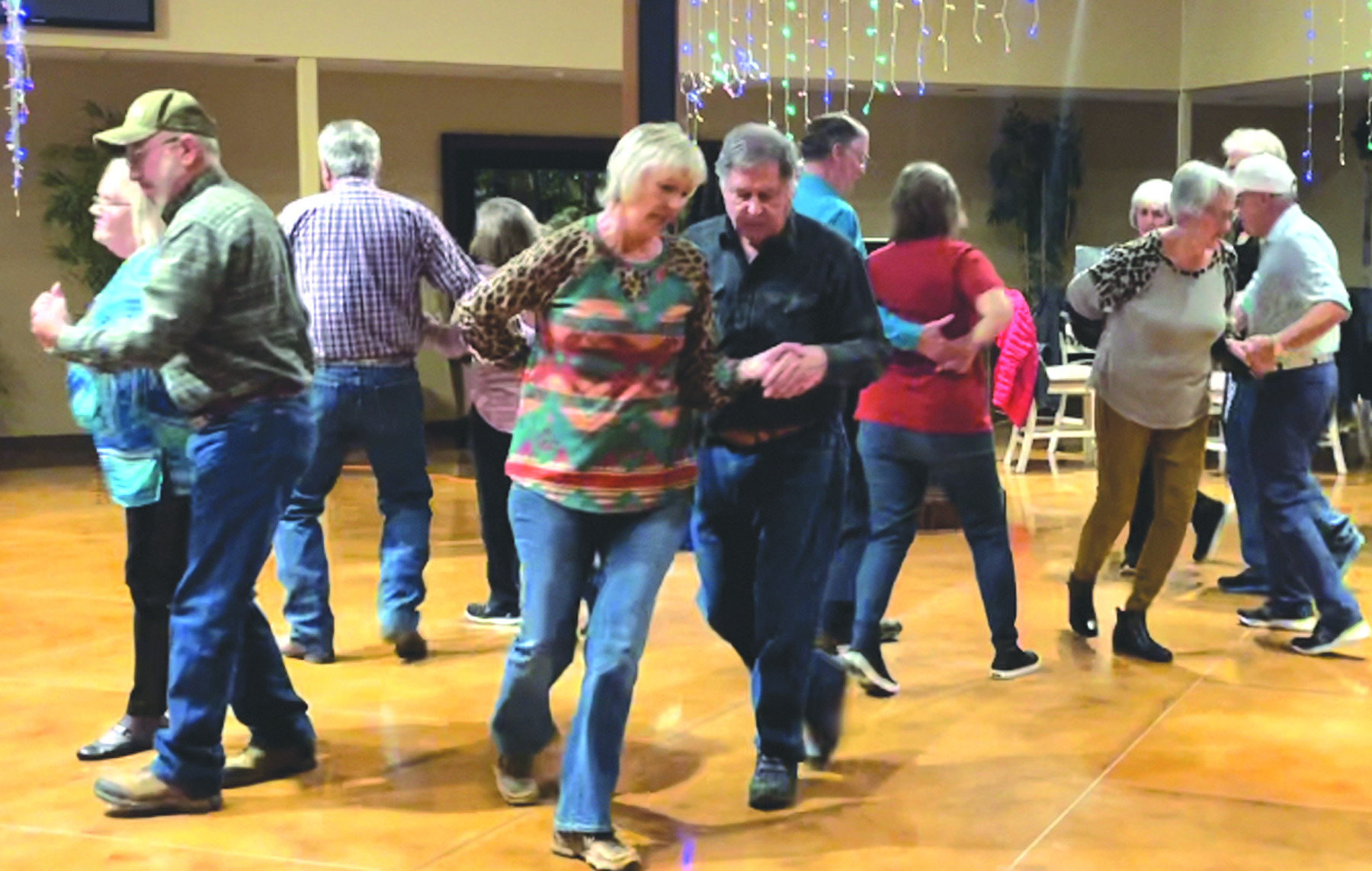square dancing
classes for all
Square dancing has long been a favorite American pastime, and a local group is working to share the lively activity with more people.
The Hi-Stepper Square Dance Club will be offering weekly square dance lessons beginning Tuesday, January 10 at the Life Fellowship Church. The lessons will take place from 7-9 p.m. each Tuesday for 14 weeks.
Square dancing is a country dance that begins with four couples arranged in a square, and they move according the directions of a “caller” who will tell the dancers to do things like “do si do” and “weave the ring.”
With dozens and dozens of possible calls, the variety of dances is limitless.
“There are benefits from A-Z for square dancing,” Linda Smith said. Smith began square dancing in 2002, and she says her 20 years of square dancing has benefitted both her physical and mental health. “Health wise because you’re moving.
Mind wise because you have to learn each call and pay attention. And you gain friendships.”
Phil Snider has been dancing for a total of 17 years, and he agrees that square dancing is a mental challenge.
“You’re always one or two calls behind,” Snider said. “It’s a mind game.”
Snider is the teacher for the Hi-Steppers, and he is responsible for playing the music and ensuring the group knows what to do. He is not alone in helping newcomers, though.
Pat Pope and other experienced square dancers act as “angels” and help guide the beginners through the steps.
“If I can do it, anyone can do it,” Pope said.
While anyone can do it, not everyone has wanted to square dance or even been supportive of the activity.
The Hi-Steppers Square Dance Club once had a notorious reputation amongst some community members. The club officially formed in Hydro in the 1980s, and they were met with pushback when they requested to use the Hydro Community Building for their dances.
Apparently, the dances of the early 1900s, before the Hi-Steppers club was formed, featured “strong liquid refreshments,” and some council members were concerned the Hi-Steppers would host similar dances and be a bad influence on the community.
After much persuasion, the council was convinced otherwise, and the group was granted permission to use the Community Building for their next dance.
One council member, however, did not agree with the decision.
On the night of the Hi-Stepper dance, the council member padlocked the Community Building to keep them from square dancing. Not to be deterred, the group simply moved their dance to the council member’s house and danced in the road in front of his home.
Neighbors brought out chairs and watched the group perform, and the next day the Hydro newspaper received many letters in support of the group.
Eventually, the Hi-Steppers were allowed to use the Community Building without an issue.
And the group has been having a good time ever since. “We laugh all the time,” Smith said. Pope agreed and said, “You talk about meeting people. We found out that they had square dancing in Red River. We took a trip together and stayed 3 or 4 days.”
And there are plenty of travel opportunities for square dancing.
“Locally, Weatherford, Clinton and Elk City have dancing,” Snider said. “You could dance about every night of the week in Oklahoma City.”
There are also clubs across the nation and even in other countries.
No matter where you dance in the world, though, the calls will always be in English, even if it is a non-English speaking country.
Those interested in learning the international activity need to be prepared for a fun and challenging time. “It’s something you have to be dedicated to,” Snider said. Since the lessons are cumulative and build off the previous week, newcomers “can’t miss several weeks in a row.”
Pope, Snider, and Smith all agreed square dancing would be beneficial for all people, but it would be best if children are at least 12 or 13 to ensure they’ll be able to focus and recall the steps.
Square dancing is considered a team sport, and each dancer has to do their part in order for everything to work smoothly, but the Hi-Steppers don’t get upset when there are mistakes. “When we break down, we just laugh and go on. It’s not a big deal,” Smith said.
For anyone wanting to have fun, build relationships and learn a classic Americana dance, be sure to make plans to join the Hi-Steppers on January 10 at 7 p.m. at the Life Fellowship Church.
The first three weeks are free, and new members will be welcome to join at any point during those three weeks because the same lesson will be taught each time. This helps beginners nail down the basics by practicing the steps multiple times, and it also gives people more flexibility on the start date.
After the first three weeks, the classes will be by donation. “If someone can’t afford it, they can come anyway,” Snider said. “We don’t care. We just put out the bucket, but we don’t look to see who drops something in.”
Those needing more information can call or text Melva Snider at (580) 214-0964.
The Hi-Stepper Square Dance Club also has a Facebook page community members can follow for updates.


